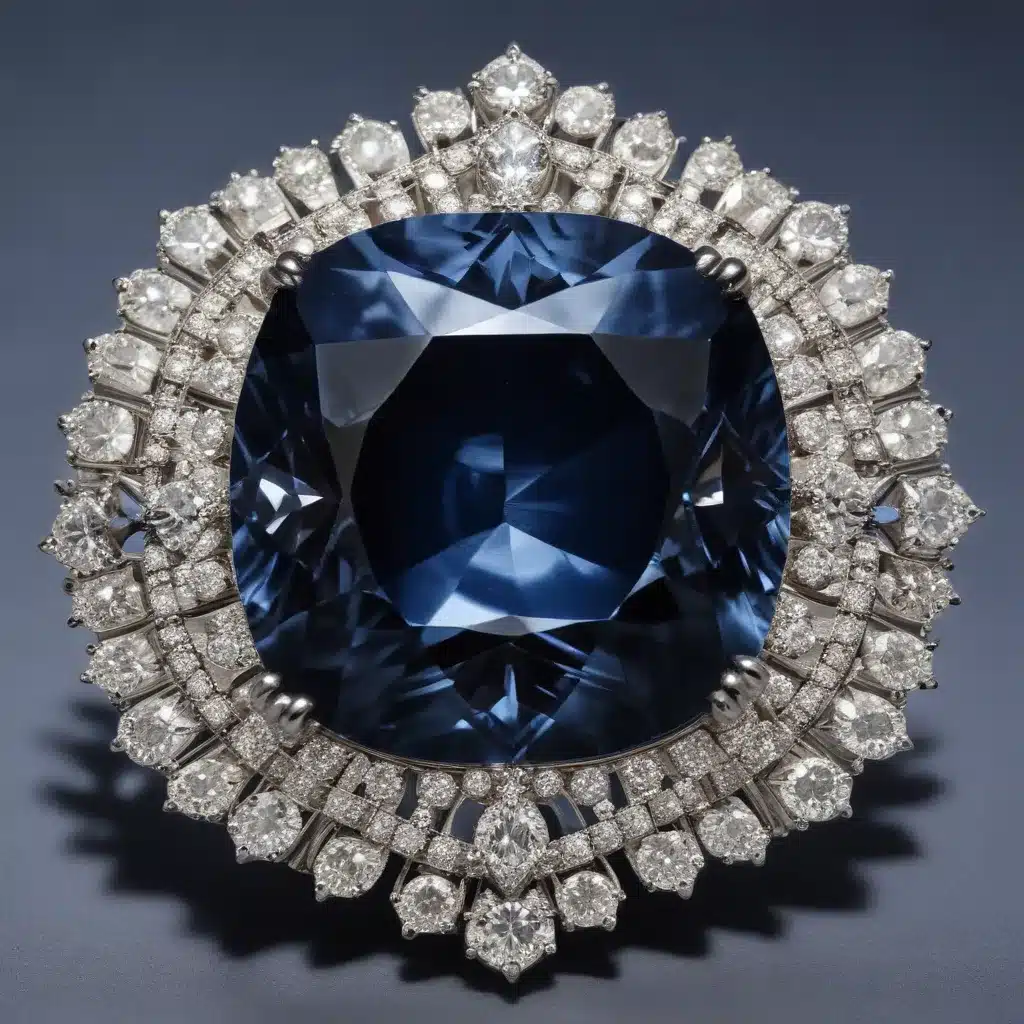
The Hope Diamond, a 45.52-carat deep blue diamond, is arguably one of the most renowned and captivating gemstones in the world. With a legendary history spanning centuries, this remarkable gem has captured the imagination of countless individuals, leaving an indelible mark on the annals of jewelry and gemology. Let’s embark on a journey to uncover the intriguing origins, intriguing ownership transitions, and enduring allure of the Hope Diamond.
The Origins of the Hope Diamond
The story of the Hope Diamond begins in the ancient Golconda region of India, where it is believed to have been mined centuries ago. The original diamond, before it was cut and polished, was estimated to have weighed a staggering 112 carats. This massive uncut stone was then acquired by French gem merchant Jean-Baptiste Tavernier in the 17th century, who later sold it to King Louis XIV of France.
The diamond’s remarkable deep blue hue is attributed to the presence of trace amounts of boron within its crystal structure, a phenomenon that is exceptionally rare in the natural world. This unique coloration, along with its exceptional clarity and brilliance, have long captivated the hearts and minds of those who have had the privilege of witnessing its grandeur.
The diamond’s origins are also shrouded in mythological lore, with legends suggesting that the stone was once the eye of a Hindu idol, and that its possession was cursed, bringing misfortune to those who owned it. These stories have only added to the diamond’s aura of mystery and intrigue, fueling the public’s fascination with its history.
Ownership and Provenance
The Hope Diamond’s journey has been marked by a series of ownership transitions, each accompanied by tales of love, tragedy, and the persistent belief in its alleged curse.
After being purchased by King Louis XIV, the diamond, known as the “French Blue” at the time, remained in the French royal court until the French Revolution, when it is believed to have been stolen from the royal treasury in 1792. The diamond then disappeared from public view for nearly two decades, until it resurfaced in London in 1812, having been recut and significantly reduced in size.
In the late 19th century, the diamond was acquired by Henry Philip Hope, after whom it was eventually named. The Hope Diamond remained in the Hope family for over a century, passing through the hands of several different owners, before being purchased by American socialite Evalyn Walsh McLean in 1911.
McLean, a Colorado gold mining heiress, was known for her flamboyant displays of the Hope Diamond, often wearing it to high-profile social events. The diamond’s association with the McLean family only further fueled the belief in its cursed nature, as the family experienced a series of personal tragedies and financial difficulties during their ownership.
After McLean’s death in 1947, the Hope Diamond was inherited by her son, Vinson Walsh McLean. It was then acquired by renowned jeweler Harry Winston, who, in 1958, famously mailed the diamond to the Smithsonian National Museum of Natural History in Washington, D.C., where it has remained on display ever since.
The Physical Characteristics
The Hope Diamond’s captivating appearance is the result of its exceptional physical characteristics. The diamond, which now weighs 45.52 carats, has been expertly cut and polished into a heart-shaped brilliant cut, showcasing its remarkable clarity and brilliance.
The diamond’s deep blue color is the result of the aforementioned trace amounts of boron within its crystal structure, which interact with the stone’s atomic arrangement to absorb specific wavelengths of light, giving it its distinctive hue. This unique coloration, coupled with the diamond’s exceptional clarity and fire, have made it a true masterpiece of nature.
Adding to the diamond’s allure is its remarkable fluorescence – when exposed to ultraviolet light, the Hope Diamond emits a beautiful red-orange glow, a property that is rarely observed in natural diamonds. This mesmerizing phenomenon has only heightened the diamond’s mystique and added to its enduring fascination.
Societal Significance
The Hope Diamond’s impact extends far beyond its physical attributes, as it has become a symbol of both cultural and artistic significance.
Throughout history, the diamond has been depicted in numerous works of art, from paintings to sculptures, solidifying its place in the collective imagination of humanity. The diamond’s image has also been used in various commercial and branding applications, further cementing its status as a cultural icon.
The Hope Diamond’s most prominent role, however, is as a centerpiece of the Smithsonian National Museum of Natural History’s gem and mineral collection. Attracting millions of visitors each year, the diamond’s display has become a must-see attraction, allowing people from around the world to witness the captivating beauty and allure of this remarkable gemstone.
Beyond its visual splendor, the Hope Diamond has also played a significant role in advancing the field of gemology, as scientists and researchers have studied its unique properties to better understand the formation and composition of natural diamonds. This ongoing scientific investigation has only added to the diamond’s mystique, as its secrets continue to be unraveled.
The Captivating History of the Hope Diamond is a testament to the enduring power of nature’s wonders. From its ancient origins in the Golconda region of India to its current home at the Smithsonian, this remarkable gemstone has captivated the hearts and minds of countless individuals, its allure and mystery continuing to inspire awe and fascination. As we gaze upon the Hope Diamond, we are reminded of the incredible feats of nature and the enduring legacy that the most exceptional of gems can leave behind.

